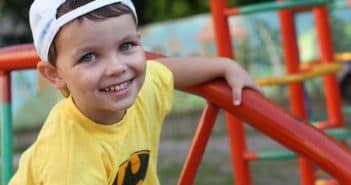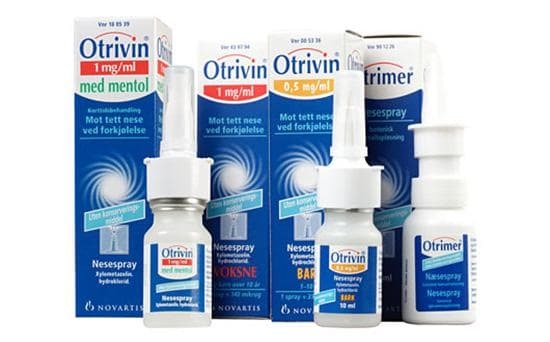
Genyantritis is most often diagnosed in children aged 4 years and above. The reason is that the maxillary sinuses of the baby are not yet completely formed, therefore they are not cavities, but narrow slits. The maxillary sinuses will form at an older age, therefore, the classic symptoms of the disease begin to make themselves felt a little later.
Content
- 1 On what grounds define
- 1.1 body temperature rise
- 1.2 Nasal congestion
- 1.3 nasal voice
- 1.4 Headache
- 2 Therapeutic measures
- 2.1 Antibiotic therapy
- 2.2 vasoconstrictive drops of topical
- 2.3 Antibacterial topical agents
- 2.4 Hormone therapy
- 2.5 Anti-inflammatory drugs
- 2.6 Operative intervention
- 2.7 Remembered
- 2.8 Antiallergic Therapy
- 2.9 Folk Treatments
- 2.9.1 Propolis
- 2.9.2 Herbal Herbs
- 2.9.3 Sea Salt
On what grounds to identify
A viral and bacterial infection is considered to be the underlying factor in the formation of the disease. As a result, childhood sinusitis can manifest itself in the form of prolonged ARI and SARS.As a rule, the symptoms of viral infections consist in the formation of the common cold, perspiration in the throat, and fever.

Under normal conditions, viral infections have a pronounced character, and all signs leave the baby for a week. Similarly, with respiratory ailments, which are formed due to bacterial infection.
How to use thuya oil for genyantritis, please see this article.
Body temperature rise
A patient at the age of 4 years from the first day of the disease may experience a temperature increase. She will hold on until the time to begin therapy. To reduce it it is possible only in the event that medical actions are based on elimination of a genyantritis. If you just give antipyretic drugs, then lower the temperature will be only for a certain time. 
Nasal congestion
Sinusitis is a disease characterized by puffiness. As a result, the child becomes difficult to breathe, as there is a purulent stasis inside. During palpation, the child is troubled by pain in the nose. 
Nasal voice
Each mother can determine this symptom. When the child began to pronounce the words "in the nose," this is a clear sign of maxillary sinusitis. This is due to the stuffiness of the sinuses, purulent "deposits".As a result, there is no clear pronunciation of sounds. 
Headache
When a 4-year-old kid experiences a headache with genyantritis, it focuses on the forehead and is of a permanent nature. This sign indicates that the disease is already on its way. The cause of headaches lies in a complicated outflow from the sinuses, resulting in pressure on the frontal part of the baby's head.
How to do a massage with genyantritis, you can find out by reading the article.
More symptoms of sinusitis include lethargy, fatigue, pale skin. 
Sinusitis in a child can be bilateral and one-sided .The difference between them is that the lesion can be applied to one or at once to two sinuses. According to clinical manifestations, the disease is divided into acute and chronic. The acute form is classified into caratal and purulent, and chronic is represented by the following species:
- hyperplastic;
- polyposis;
- is atrophic;
- mixed.
How the cuckoo is made with genyantritis is indicated in the article.
All the presented types of chronic sinusitis, despite the difference in symptoms, cause damage to the nasal sinus mucosa. If you do not start treatment in time, then atrophic sinusitis helps to completely stop the functioning of the mucous membrane. As a result, the baby's body is deprived of a filter that protects the lungs from pollution and cold air in the winter. If you do not seek help from a doctor when you are young, you can remain in the mature without a respiratory protection.
The video describes the symptoms of sinusitis in children 4 years old:
Symptoms of chronic sinusitis in a child of 4 years are similar to the symptoms of the disease in acute form, it is only expressed they are not so much. There are cases when manifestations of chronic sinusitis begin to disturb the baby after several weeks of treatment. The first signals of genyantritis in a child is a smell from the mouth or nose. Already these symptoms should alert the parents.
What signs of maxillary sinusitis in adults can be identified independently, is indicated in this article.
There is a chronic form due to poor-quality treatment of acute sinusitis or because of an inaccurately established focus of infection.
Therapeutic measures
To confirm the diagnosis in the child the doctor sends it to the ultrasound diagnosis. Still can use the method of diaphanoscopy. Its essence lies in the fact that in the mouth of the baby the bulb of Goering is placed. The child grabs her tightly with her lips. To conduct a study is necessary in a dark room. On the level of transparency of the nasal passages the doctor will be able to determine inflammation.
How to treat sinusitis with salt at home, you can learn from the article.
Antibacterial therapy
For such treatment, a specialist assigns a wide range of medicines to the baby. Given the severity of the ailment, antibiotics can be presented in the form of tablets or injections. Most commonly prescribed are:
- Augmentin;

- Amoxiclav;
- Flemoxin;
- Solutab.
The presented medicines are in great demand because of their rapid penetration into the tissues. If the inflammation has a microplasma or chlamydial form, then an antibiotic reserve is used. As a rule, the doctor can prescribe to the child Vilprofen, Azithromycin. The dosage is selected taking into account the age of the baby.
When the sinusitis is severe, antibiotics are injected into the body. Here, intramuscular or intravenous administration can be used.
From this article you can find out what antibiotics are better for drinking with genyantritis.
Local Vasotherapy Drugs
Nasal drops may be prescribed to eliminate the swelling of the nasal mucosa and to regenerate the secretion. It is best for a child of 4 years to use these medicines in the form of a spray. Small drops can be prescribed to the following patients:
- Nazivin;
- Xylen;
- Sanorin;
- Vibrocil.

Antibacterial agents of local action
A wide demand for the treatment of pediatric sinusitis is used such medications as Bioparox, Isofa. They are actively fighting the causative agent directly in the nasal cavity. Take them follows a course that consists of 5 days. 
Hormone therapy
This treatment is based on the use of hormonal drops and nasal sprays. The most effective are Polidexa, Fliksonase. These medicines in a short period of time eliminate the inflammatory process and puffiness. 
Anti-inflammatory drugs
For the treatment of sinusitis in children 4 years old, use Erespal. It is made in the form of a spray for small children. For older patients, it can be taken in the form of tablets. The drug perfectly eliminates the inflammatory process, fights against all the symptoms of the disease. 
Surgical intervention
Surgical treatment is necessary only in a very neglected case. The operation involves a centering procedure. Manipulation is very simple. It involves the execution of a puncture of the sinus wall with the subsequent suction of purulent accumulations from it. After that, wash the sinuses with antiseptic solutions. 
Auxiliary therapy
In addition to the treatment presented, the doctor can prescribe a child UHF and laser therapy, rinsing the nasal passages and nasopharynx. All these therapeutic measures can be used as the main treatment or supplement to the main therapy.
What is the price of the Yamik catheter, which is used for sinusitis, can be found from the article
Antiallergic therapy
Antihistamines can be taken only in case of allergic origin of the disease. For children the following medicines are developed:
- Fenistil;
- Zodak;
- Zirtek;
- Suprastin.

Folk treatment
If you decide to turn to non-traditional treatment, you must first get the approval of the treating doctor. After this, you can actively use propolis, bee glue, medicinal herbs and sea salt. The presented components have the maximum effect in the treatment of sinusitis in children 4 years old.
The article specifies the prevention of maxillary sinusitis.
On the video - more information about sinusitis in children 4 years old, symptoms, treatment at home:
Propolis
The composition of this component is rich in various substances useful to the human body. All of them have anti-inflammatory and analgesic effect. Propolis mono actively used for various ailments of inflammatory nature. If there is a chronic sinusitis, then a 20% propolis solution should be used. 
To get the medicine you need to take peach oil and propolis solution. Mix everything in a 1: 1 ratio.soak a cotton swab in the medicine and insert into the nasal passages for 10 minutes. Perform such manipulations should be 2 times a day.
How to use Renoflumacil for sinusitis is indicated here.
Healing herbs
In pediatric sinusitis, sage, calendula, and chamomile have a positive effect. Prepare the broth can be from a mixture of presented herbs or use some one. Use the prepared product for washing. Perform treatment in the morning and evening.
You can do such activities as prevention 3 times a week. Washing of the nasal passages in the child is an effective method of eliminating dust particles entering into the nose. Often they are the causative agents of the pathological process. 
Sea salt
This component is a natural and absolutely safe antiseptic. Sea salt has been widely used in chronic sinusitis in a child. With regular application, you can cure the neglected form and prevent puncture.
What symptoms of sinusitis and sinusitis can be, you can find out by reading the article.
Most often sea salt is used for washing. It is necessary to add 2 tablespoons of the presented ingredient to a glass of boiled water. To eliminate pain and swelling, you can make a compress of heated sea salt, which must be wrapped in a handkerchief and put on the bridge of the nose. But it is possible to carry out such measures only if there is no purulent form of the disease. 
Sinusitis is a dangerous disease, which can not be eliminated without proper examination and treatment. If you postpone therapy or perform it incorrectly, there is a huge risk of complications and the transition of the disease from acute to chronic.
